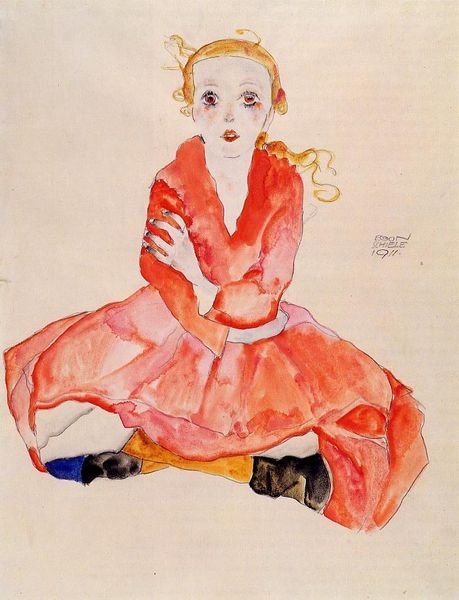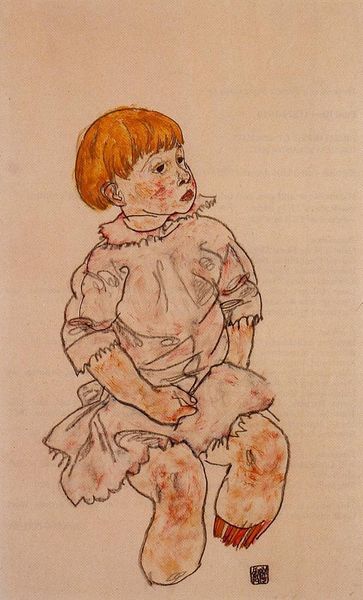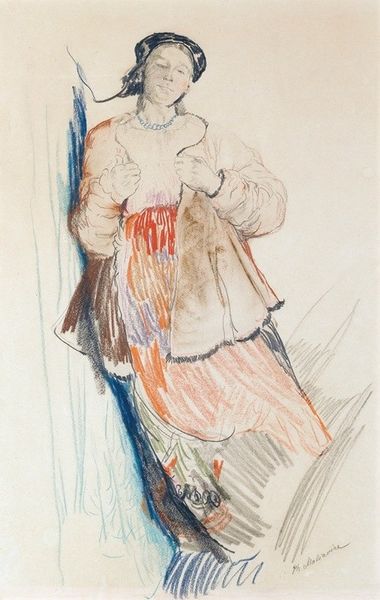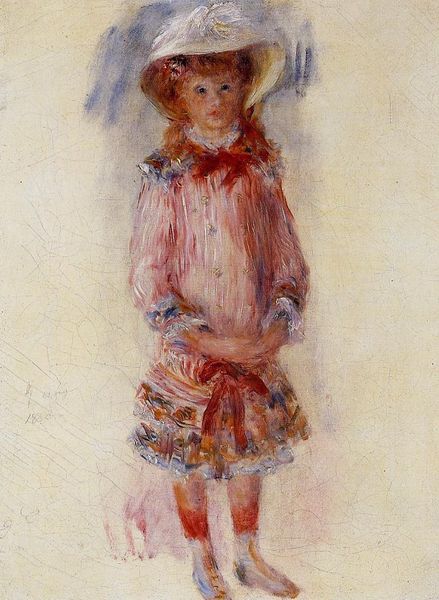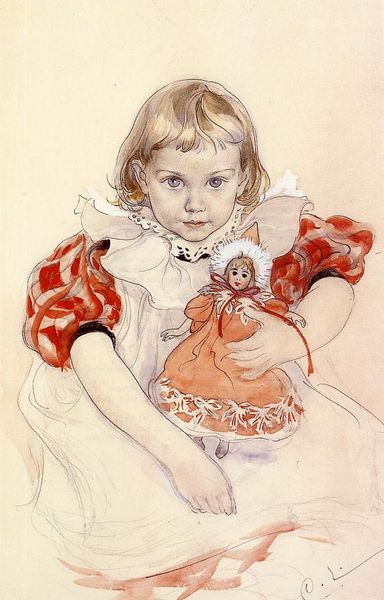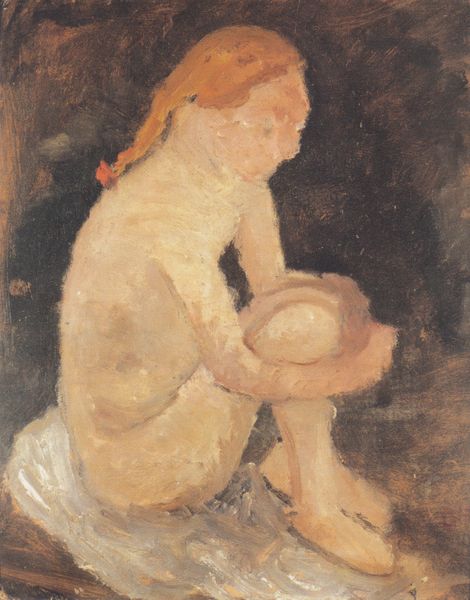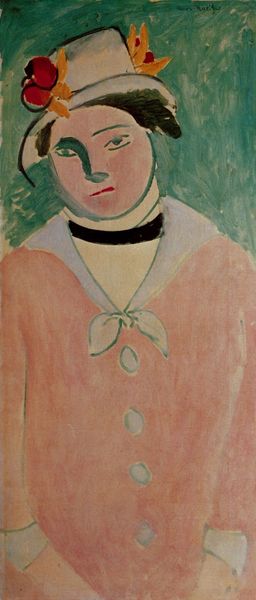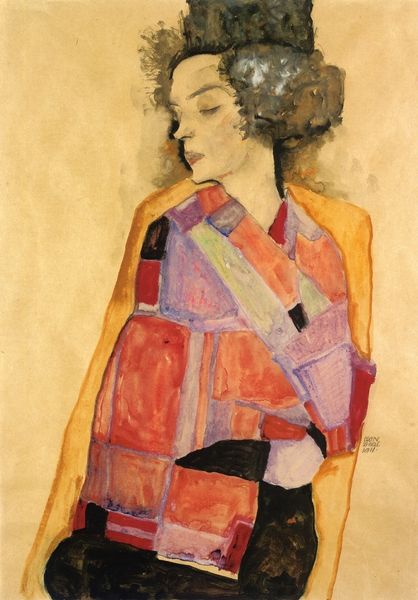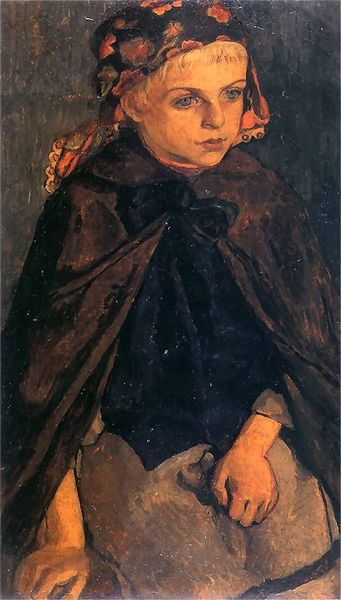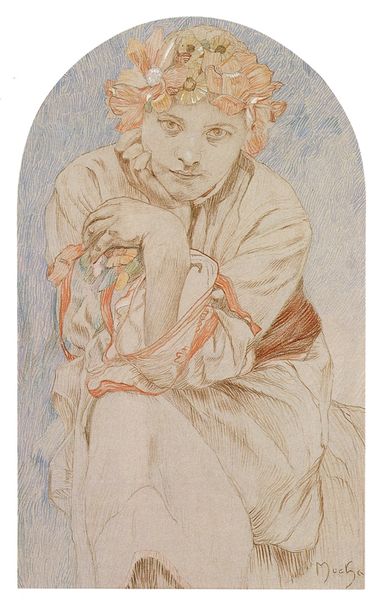
drawing, coloured-pencil, paper
#
portrait
#
drawing
#
coloured-pencil
#
water colours
#
paper
#
coloured pencil
#
expressionism
Copyright: Public domain
Curator: Look at this intense portrait, dating from 1916, titled "Little Girl with Blond Hair in a Red Dress," created with coloured pencil on paper by Egon Schiele. Editor: Her sidelong glance definitely grabs your attention. There's something profoundly unsettling in her expression, almost like a premonition of… something. And those angular lines really amplify the feeling of discomfort. Curator: Schiele’s Expressionist style often explores the darker aspects of the human condition, the turmoil, and vulnerability felt at this time—particularly youth. Her clothes speak to the period; the somewhat formal attire contrasts with the awkwardness of her pose. Editor: The red of her dress definitely strikes me as more than just vibrant—it's almost like a symbol. Considering the time, did this vibrant red color symbolize any radical politics? Curator: During World War One, a young girl's bright clothes certainly carried symbolism related to protection from poverty but primarily conveyed optimism, even defiance in the face of loss and rationing. Schiele's work often served as a societal mirror, though he never claimed it as a political protest. Editor: Absolutely, that period was heavy with societal upheaval. And in her pale, seemingly unfinished hands and slightly downturned head—what could she represent in terms of gender or even sexuality? Was he aware that this portrayal of children could invite scrutiny? Curator: Indeed. He sought to unveil authentic emotions. We must examine his position as a male artist portraying young women in a patriarchal context to explore themes such as childhood, vulnerability, and nascent female identity in the pre-war era. Editor: Absolutely, situating his work within both personal and broader intersectional perspectives provides a deeper insight, which is crucial when interpreting powerful artworks like this. I feel haunted but also see how the social history of children are caught and amplified here, it really makes us examine all the political layers here. Curator: And that enduring interrogation of representation is why Schiele's pieces retain their value as cultural documents even a century later.
Comments
No comments
Be the first to comment and join the conversation on the ultimate creative platform.
